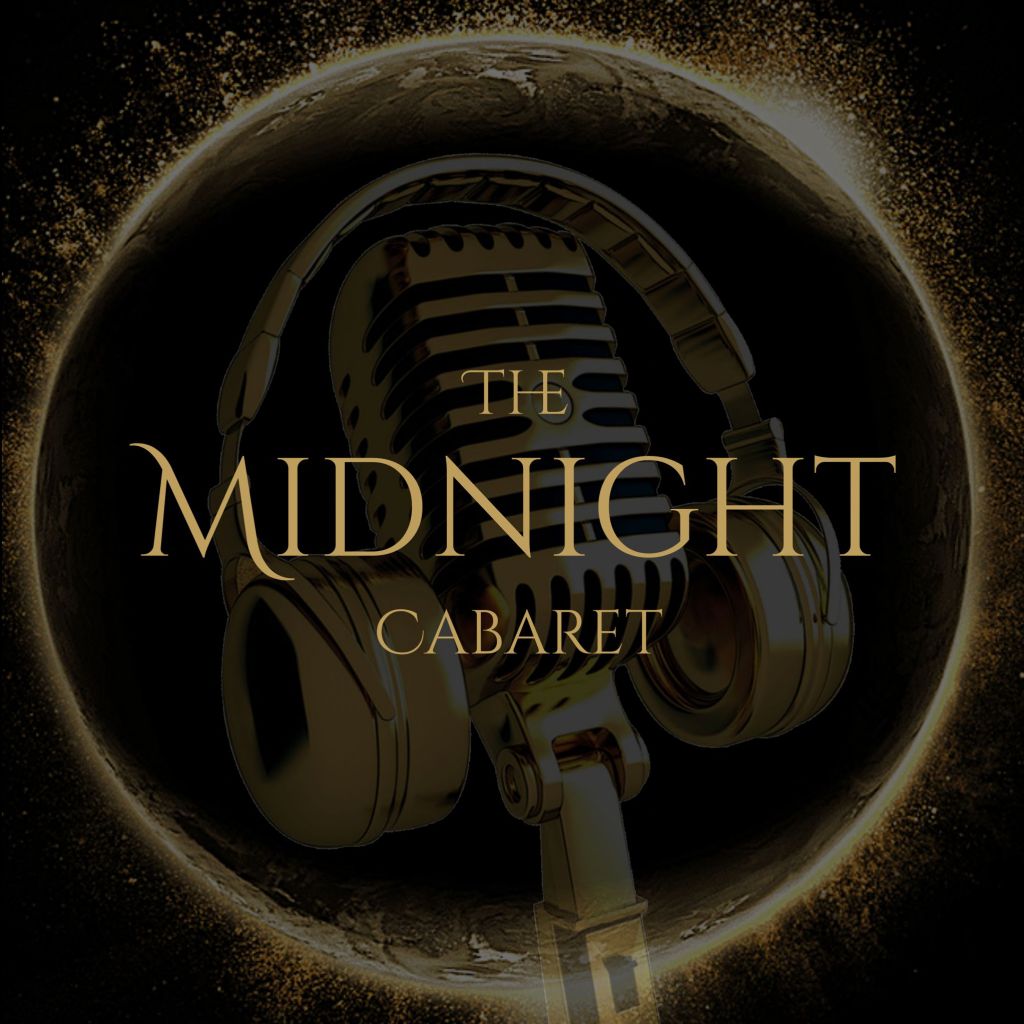In the realm of artistic innovation, certain individuals possess the ability to transform sound into an ethereal journey that transcends conventional boundaries. Tia Rungray, the virtuoso electroacoustic musician, captivates audiences with his enigmatic compositions that blend piano and noise sound into an otherworldly tapestry. As we embark on an exclusive interview, we delve deep into the essence of Tia Rungray’s musical odyssey, exploring the origins of his unique sound and the profound philosophical underpinnings that shape his artistic expression. Join us for an extraordinary encounter that unravels the mysteries of Tia Rungray’s sonic universe.

How did you discover your unique sound?
Tia: Usually, the ideal music recording and mixing form is noise-free, and there is a historical history of pursuing this. In this context, musical sounds need to be recorded more cleanly. Importantly, it is the ‘musical sound’ that we focus on at this time. The same can be said for noise music, which at first glance, is at the opposite end of the spectrum. The ‘musical sound’ in them is equal to the ‘noise’.
But I have a unique point of view here. Not all my compositions are based on a completely fixed set of values. Nevertheless, the underlying issue is that I wanted to emphasise the ‘beauty of the piano sound emerging from the flood of noise’.
The impetus for this came from curiosity.
It was during the period when I was a teenager and familiar with hardcore techno. Until then, my parents had often played rock music for me as a child, so I preferred distorted sounds. At the same time, I was also familiar with classical and piano music, so this background is so chaotic that if I tell this to anyone, they will not understand me at all!
At first, I was trying to make a hardcore techno track, trying to create a gabba kick sound. Eventually, curiosity whispered to me. I followed its voice, and sure enough, I applied excessive distortion to a recorded piano track.
A composer with ordinary sensibilities would have raised an eyebrow, but not me. I was captivated by the beauty of the piano sound coming from behind the distortion sound (noise sound). I then decided to share this with my listeners as Tia Rungray, and here we are.
Who were some of the composers that explored the combination of noise and music before you?
Tia: In ancient Japanese music, the concept of ‘sawari’ in shakuhachi playing has been carried over to the present day.
In the context of European music, John Cage tried to confine the noise of the concert hall within a time frame of “4:33”. Pioneers of experimental music such as Stockhausen and Schoenberg would also have blurred the boundaries between musical sound and noise in their attempts to transcend the boundaries of music theory.
In contemporary Japanese music, Toru Takemitsu created music with a sound design orientation, using Japanese instruments and instruments not found in European music.
Although this was accidental, Glenn Gould’s piano recordings expressed that his musical expression was not only on the keyboard by including his humming (moaning).
How did your interest in the piano develop?
Tia: My parents brought me a chaotic musical career, including piano music.
The soundtrack to The Piano by Michael Nyman resonated strongly with me as a teenager, as did the music of Erik Satie and Sergei Rachmaninov.
After leaving my parents’ influence, I was fascinated by Vladimir Horowitz’s playing. I am driven by a desire to copy his style; if only I had been born a few decades earlier!
The above was about the piano as music, but the piano as an instrument is, in my opinion, very sinful.
It can express everything from a silky sound to a wild roar, from a light step to a rock-crushing power. It is easy for us to understand why this instrument was initially called ‘pianoforte’. Of course, it looks like a fascinating instrument to me.
What is the process you follow to create your unique sound?
Tia: First, record the piano.
Branch the audio signal from the piano track to the aux and apply noise effects.
Apply a deep reverb to it.
With the piano and the noise playing simultaneously, my music is complete!
What role does the Digital Audio Workstation (DAW) play in your music production process?
Tia: I could not realise my music without a DAW. It’s not so much a canvas in painting, though.
How do you achieve a balance between the piano and noise in your compositions?
It is not just about fader control on the DAW. Especially in performances, the volume of the piano and noise may be controlled by velocity signals from the MIDI keyboard.
How does your real-time control of the piano and noise contribute to your live performances?
Tia: The real-time control of the piano and noise allows me to immediately reflect on the finer movements of emotion that I want to express during the performance.
How does your use of a looper add depth to your sound during live performances?
Tia: When I use the looper, I submerge it in an intense reverb and a very long delay. Combining this with noise sounds creates an unrealistic and more immersive soundscape.
How has your electroacoustic music project been received by audiences?
Tia: I don’t know. But they are listening to my music, so I appreciate it and am pleased.
What genres and elements does your music incorporate?
Tia: Elements of music and genres I’ve been listening to are incorporated into my music—ambient, post-classical, noise music, hard rock, Japanese classical music, etc.
What was the response to your album ‘MindgEsso’ from composer Akira Senju?
Tia: Akira Senju said:
“Tia Rungray’s world has no borders. It is music from classical, healing, heavy metal, ambient, and beyond. He has absorbed and evolved these essences uniquely, even crossing the border between music and everything else. It gives soul and groove to sounds that normally sound like music and creates a common déjà vu that we all share in the sounds of everyday life. The carefully selected and stripped-down pieces of sound are fragments of music that will have a life together with the various creations of the future to be created. I didn’t know noise could be so emotional. I heard the air of the future a little further ahead.”
What collaborations have you been involved in?
Tia: I collaborated with video projectionist Heberryyke Caravan for my performance ‘LIVE: Ghostmarch’ in September 2022.
It took over six months of preparation, designing a dedicated video screen to be installed within Second Life, and many test projections. It was a valuable experience for me and very emotional for me to be able to perform the show with the support of so many members of the team.
I have left an archive on YouTube for you to watch.
What recognition did your music video ‘Soft Strings’ receive?
Tia: First, it was selected for an arts support project by the Tokyo Metropolitan Government, and then it won an award at the International Film Festival.
What is the purpose of the ‘Second Life Music Composers Directory’?
Tia: Livio Korobase said:
“I am building in a dedicated space, sort of directory for musicians that play own music. The goal is give a overview about all the people that spend time and energies composing own music and let people find in a easy manner.”
How did you become part of the ‘Second Life Music Composers Directory’?
Tia: My first interaction with Livio was for the SL Music LAB Summer Festival 2021 within SLEA. At that time I was asked to perform through my manager.
I have spoken to Livio many times since then, so I think he invited me to join the Second Life Music Composers Directory this time.
If music and art lovers in SL had not come to my performance, I would have quickly gone to another platform. That didn’t happen. So the fact that I can continue with my music performances in this way has helped me to get into the Directory. I am pleased and thankful to the community.
What is your goal with your music?
Tia: It is a more conclusive expression of the inner world of human beings.
What do you hope listeners will experience through your music?
Tia: Ideally, listeners should be able to use the themes of each of my performances and the titles of my improvisations as clues to the experience of immersion in the world of music. Ideally, though, if possible, they should not rely on words.
How does your music go beyond notes and rhythms?
Tia: You’ll know it when you hear it.
How do you view the potential of sound to evoke emotions and thoughts?
Tia: The history of human evolution shows that language is there to standardise emotions and thoughts and share them in society. Music is within a framework that is far removed from this standardisation.
There are sections of my music that take a lot of work to get to. For listeners, there are many things that they would like me to explain in words. In the past, some people have rudely asked me for lyrics. But for me, music expresses what words cannot.
Some songs, like ‘Specimens of Ghost‘, come with a poem, but that just sets up an opening for the listener’s interpretation.
Sound is a more primal evocation of emotions and thoughts. I am only faithful to that.
What is the philosophical underpinning of your unique sound?
Tia: Musical sounds in a flood of noise are beautiful.

Tia Rungray stands as a luminary in the realm of musical innovation, a trailblazer whose artistry and vision transcend conventional boundaries. His compositions, an exquisite blend of piano and noise sound, transport audiences into the realms of the unknown, evoking emotions and contemplation. As we conclude this captivating interview, we are left with a profound appreciation for the harmonic tapestry that Tia Rungray weaves. His music serves as a testament to the boundless possibilities of sonic exploration and the power of artistic expression to ignite the depths of the human spirit. Prepare to be enchanted by the enigmatic melodies and transcendent philosophy of Tia Rungray’s sonic universe.

Tia Rungray Biography
Tia Rungray: An Exploration of Electroacoustic Soundscapes
Tia Rungray is an electroacoustic music project spearheaded by the self-produced Noami Takayuki, advocating for the convergence of noise and classical music. With the release of his debut album “Foresta” in May 2013, Tia embarked on a journey of live performances in both virtual and physical spaces, captivating audiences in Tokyo and Saitama. Influenced by the ideas of Erik Satie and John Cage, Tia focuses on instrumental music that incorporates environmental sounds, piano melodies, and even elements of noise. His unique style, a blend of ambient, post-classical, and noise genres, sets him apart from traditional healing and meditation music, inviting listeners into an inner world of profound expression.
Biography:
May 2013: Debut Album “Foresta”
April 2018: Album “MindgEsso” on the “Cat&Bonito” label, praised by composer Akira Senju for its futuristic aura.
March 2019: Music Video “Dancing Fly in My Head” directed by Kenji Agata, in collaboration with the Akira Senju Office, Tokyo University of the Arts COI, and YAMAHA.
July 2020: Album “Juvenile” released on the “Tanukineiri Records” label, featuring a collaboration with Yorihisa Taura.
August 2020: Music Video “Soft Strings” selected for the Tokyo Metropolitan Government’s arts support program, “Yell for Art.”
June 2022: Performance at the “Second Life 19th Birthday Music Fest (SL19B).” August 2022: Album “Ghostmarch” released. September
2022: Performance “LIVE: Ghostmarch” featuring video projection by Hebeerryke Caravan.
Takayuki Noami is an esteemed art and sound producer, multimedia designer, and the representative of Non-REM Studio. Born in Kyoto, Japan, in 1992, he embarked on his creative journey by entering the Department of Musical Creation and Environment at the Faculty of Music, Tokyo University of the Arts, in 2011. In 2013, Noami self-produced the electroacoustic music project Tia Rungray. At Non-REM Studio, he demonstrates his expertise in sound production, graphic design, and video editing.
October 2020: Best Music Video Director at the 1st Monthly Film Festival (Serbia) for the music video “Tia Rungray – Soft Strings.”
October 2021: Sound Design for the animated short film “Nomi no Sukune,” directed by Ryotaro Miyajima.
February 2022: Music for the PR Video “MUJI HOTEL GINZA,” produced by Triple Inc.
August 2022: Video Editing for the music video “Chage – Souiuhito.”
_________________________________________________
Booking Contact: Tia Rungray (tialer.mimulus)
PR: Art Promotion by Violet Boa
*Kindly send your inquiries via notecard in SL.
_________________________________________________
Official Website
Join Tia’s community on Discord for updates and discussions.
Follow Tia Rungray: Stay connected and receive Tia’s latest updates on social media.
- Subscribe to Tia’s YouTube channel for captivating performances.
- Follow Tia on Twitter to stay in the loop.
- Connect with Tia on Facebook for news and updates.
- Immerse yourself in Tia’s world through captivating visuals on Instagram.
- Explore Tia’s photographic journey and artistic vision on Flickr.
Streaming Live Archive 2022: Immerse yourself in the full performance playlist.
Album Releases: Dive into Tia Rungray’s discography and experience his sonic landscapes.
- Discover Tia’s albums on Apple Music.
- Immerse yourself in Tia’s music on Spotify.
- Support Tia’s artistic journey through Bandcamp.
Show your support for Tia’s creative endeavors: PayPal
_________________________________________________
Mark your calendars for May 27, 2023, at 1 pm SLT, and join us at The Hexagons in Museum Island, Second Life, or tune in to the YouTube live stream. Experience the exceptional compositions of Tia Rungray, masterfully blending piano and noise sound. This event, organized by the Second Life Music Composers Directory, promises an unforgettable journey into the realm of unique musical expression.
Don’t miss out on this opportunity to witness the captivating artistry of Tia Rungray.

Blog by Violet Boa, PR Representative
Sign up for our newsletter now!







